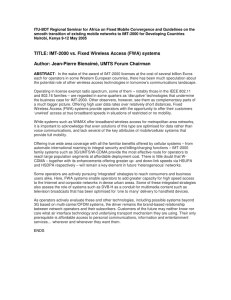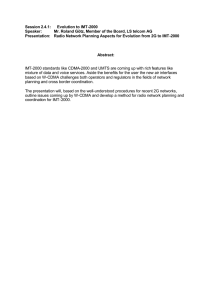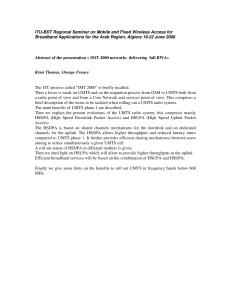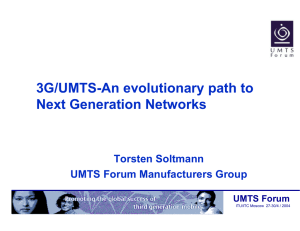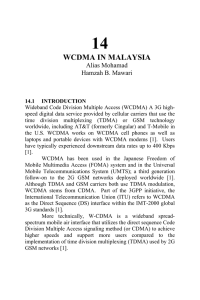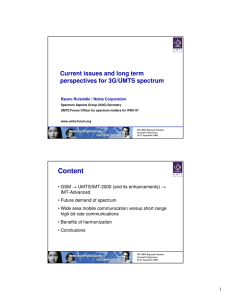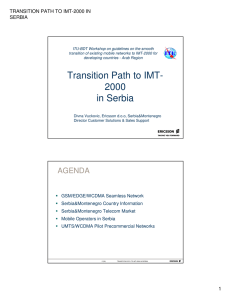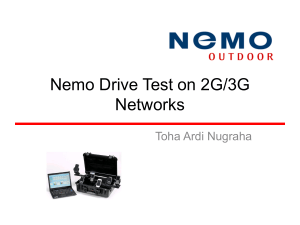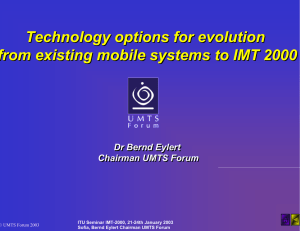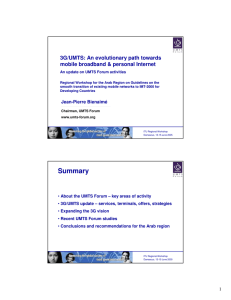TECHNOLOGY OPTIONS FOR EVOLUTION FROM EXISTING MOBILE SYSTEMS TO IMT-2000
advertisement
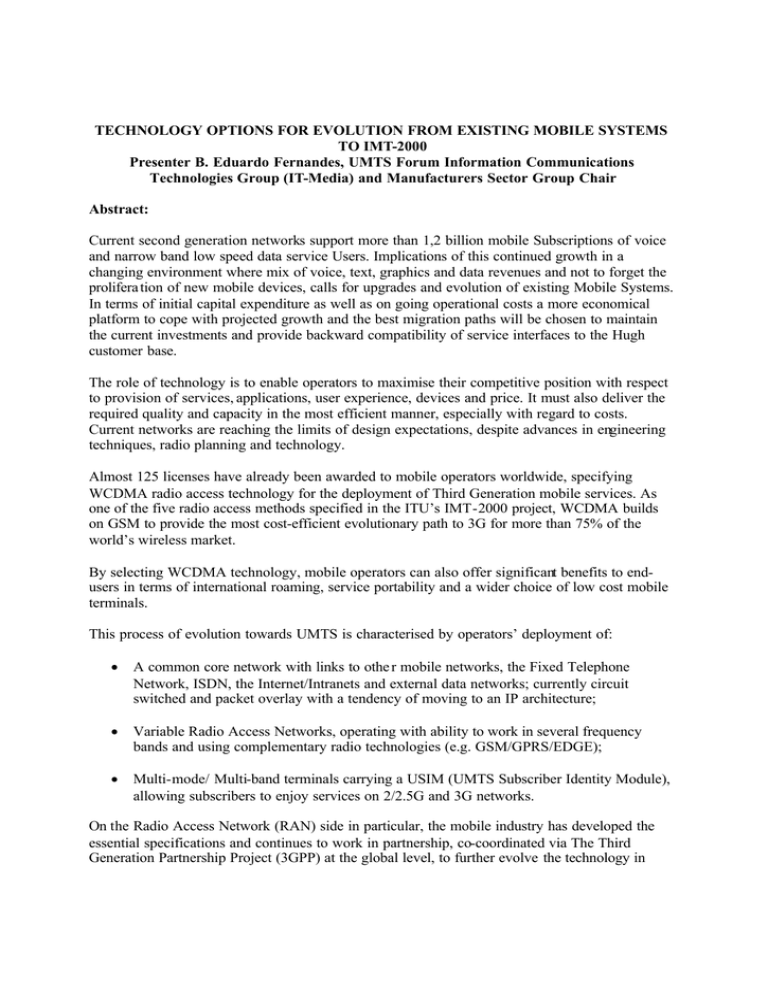
TECHNOLOGY OPTIONS FOR EVOLUTION FROM EXISTING MOBILE SYSTEMS TO IMT-2000 Presenter B. Eduardo Fernandes, UMTS Forum Information Communications Technologies Group (IT-Media) and Manufacturers Sector Group Chair Abstract: Current second generation networks support more than 1,2 billion mobile Subscriptions of voice and narrow band low speed data service Users. Implications of this continued growth in a changing environment where mix of voice, text, graphics and data revenues and not to forget the prolifera tion of new mobile devices, calls for upgrades and evolution of existing Mobile Systems. In terms of initial capital expenditure as well as on going operational costs a more economical platform to cope with projected growth and the best migration paths will be chosen to maintain the current investments and provide backward compatibility of service interfaces to the Hugh customer base. The role of technology is to enable operators to maximise their competitive position with respect to provision of services, applications, user experience, devices and price. It must also deliver the required quality and capacity in the most efficient manner, especially with regard to costs. Current networks are reaching the limits of design expectations, despite advances in engineering techniques, radio planning and technology. Almost 125 licenses have already been awarded to mobile operators worldwide, specifying WCDMA radio access technology for the deployment of Third Generation mobile services. As one of the five radio access methods specified in the ITU’s IMT-2000 project, WCDMA builds on GSM to provide the most cost-efficient evolutionary path to 3G for more than 75% of the world’s wireless market. By selecting WCDMA technology, mobile operators can also offer significant benefits to endusers in terms of international roaming, service portability and a wider choice of low cost mobile terminals. This process of evolution towards UMTS is characterised by operators’ deployment of: • A common core network with links to othe r mobile networks, the Fixed Telephone Network, ISDN, the Internet/Intranets and external data networks; currently circuit switched and packet overlay with a tendency of moving to an IP architecture; • Variable Radio Access Networks, operating with ability to work in several frequency bands and using complementary radio technologies (e.g. GSM/GPRS/EDGE); • Multi-mode/ Multi-band terminals carrying a USIM (UMTS Subscriber Identity Module), allowing subscribers to enjoy services on 2/2.5G and 3G networks. On the Radio Access Network (RAN) side in particular, the mobile industry has developed the essential specifications and continues to work in partnership, co-coordinated via The Third Generation Partnership Project (3GPP) at the global level, to further evolve the technology in order to support future market needs. This step-by-step approach reduces the risks that 3G is perceived to devalue old investments, and also provides significant improvements in the capability to deliver improved services at each step along the way. In all cases, each new release of the 3GPP standards provides backward compatibility, assuring an uninterrupted service capability for new and existing users alike. The UMTS Forum continues to study the market, technology, regulatory and service issues faced by network operators and manufacturers as well as the developers of mobile applications as they prepare their own 3G customer offerings. In particular, it considers the benefits to industry and end users of a roadmap to and evolution of UMTS/WCDMA as part of the ITU/IMT-2000 standard. This presentation will explore in more detail technology options that follows the evolution path to IMT2000.

